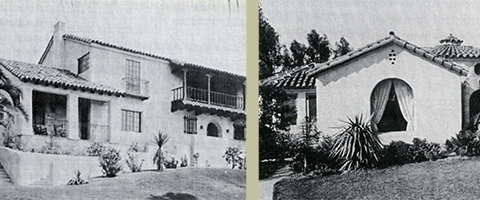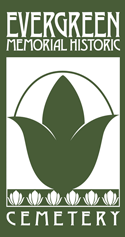
Robert Spurgeon, Jr., was born in New York. His parents, Robert Senior and Lillian Maguire met and married in Chicago in 1891. They moved to Denver briefly, then returned to Chicago where Robert’s older sister, Grace, was born. Robert’s father had a successful legal career. He moved the family to New York City, where became the attorney for the U. S. Steel Corporation.
As a young man, Robert Junior traveled in Europe and Asia with friends and family and attended Columbia University, where he graduated in 1916 as an architect. He then studied in the Beaux Arts Institute in Paris, before joining the U. S. Navy during World War I. He was discharged with the rank of lieutenant in 1918 and went to Los Angeles, where he worked as an architect for two years.
When his parents moved to Riverside to be with his recently widowed sister Grace, he joined them soon after. Robert’s first architectural commission in Riverside was the design of employee houses for security firm heir, Allan Pinkerton. Alan Pinkerton had served as a major in the Intelligence Corps in World War I and had been exposed to poison gas in an attack. As a result, he began to spend winters in Riverside, at the Mission Inn, seeking a mild climate. Pinkerton purchased 46 acres near Central and Victoria Avenues, and G. Stanley Wilson designed a 7,000 square foot winter home for Pinkerton, who had additionally been drawn to Riverside because of his interest in polo. Riverside had had a thriving polo club since 1892.
Spurgeon’s commission was to design two 11-room caretakers’ houses, two 5-room cottages, and a stable with 55 stalls adjacent to the polo fields Pinkerton built.
Spurgeon built 33 houses in Riverside, some of which were commissioned and some of which he built on speculation and later sold. Noted among these are the Arthur Holden House on Magnolia; the rebuilding of the Porter house, originally designed by Arthur Benton and damaged by fire; and the Ladera Lane home he built for his father.
After his father’s death, he designed another house across the street from the Ladera Lane home for himself and his mother. The home features twisted pilasters and a circular tower. From 1926 to 1928, Spurgeon completed several homes on speculation: 4864 and 4874 Park Avenue, 6895 and 6911 Magnolia, and 3080 and 3092 Chestnut Street.
He continued with his custom designs, building the Elijah Parker House on Ladera Lane.
In 1928, though home building had begun to decline, Spurgeon had completed 18 homes. That year, he designed a house for himself at 4736 Indian Hill Road, but he never lived in it. In 1928, he met Betty Van Rennselaar Delafield when he was designing an addition to her father’s house. The two married in 1929 and moved to Santa Barbara, near where his sister Grace was living. They had two sons.
Spurgeon designed two more Riverside homes and continued his practice in Santa Barbara. He died suddenly in 1931 of a ruptured appendix.

